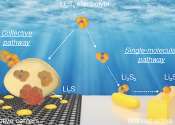Argonne National Laboratory
Argonne National Laboratory is the first and the largest national labs chartered in 1946 in DuPage County, Illinois. The US Department of Energy funds Argonne National Lab and U Chicago Argonne, LLC manages the site. Argonne National Lab is the descendant of Chicago's Metallurgical Laboratory and the home of Enrico Fermi's first controlled nuclear chain reaction demonstration. Today the Argonne Laboratory consists of the Argonne Advanced Photon Source, The Argonne Tandem Linear Accelerator System and conducts basic scientific research, conducts experiments on clean energy sources, manages environmental problems nationally, and most importantly reviews and monitors national security risks.
- Address
- Communications & Public Affairs
Argonne National Laboratory
9700 S. Cass Avenue Argonne, IL 60439
- Website
- http://www.anl.gov/index.html
- Wikipedia
- http://en.wikipedia.org/wiki/Argonne_National_Laboratory
Some content from Wikipedia,
licensed under CC BY-SA









